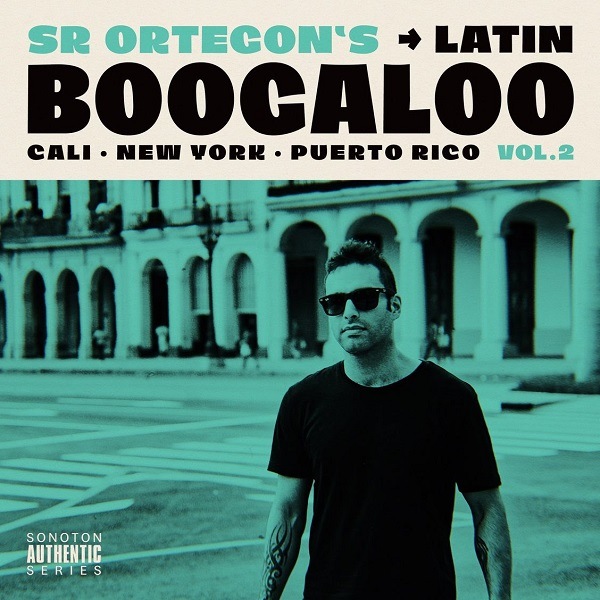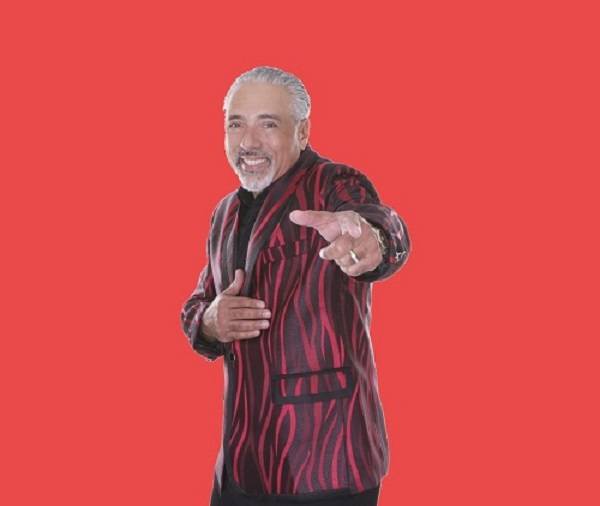Argentina – Buenos Aires
 |
 |
 |
 |
 |
Bolivia
 |
 |
 |
Brasil
 |
 |
 |
 |
 |
 |
 |
 |
|
Chile
 |
 |
 |
 |
 |
 |
 |
 |
 |
Argentina – Buenos Aires
 |
 |
 |
 |
 |
Bolivia
 |
 |
 |
Brasil
 |
 |
 |
 |
 |
 |
 |
 |
|
Chile
 |
 |
 |
 |
 |
 |
 |
 |
 |
The Oldest Latino Festival In India Returns With More Salsa Immersion

Latin Festival Madras started in 2014 and is the only one of its style in Chennai
The largest and oldest ten-day Latin gathering in Chennai (India) will bring the Maestro Jimmy Bosch “El Trombonista Criollo” and one of the best timbaleros in Europe today, Joaquín Arteaga live at the five-star hotel, Vivanta Chennai It Expressway located at 309, Old Mahabalipuram Road, Shollinganallur Chennai, Tamil Nadu, India 600119.
In this ninth edition of the festival, you will also find carefully designed Salsa, Bachata, and Kizomba workshops, special training camps with instructors with more than a decade of teaching experience at festivals around the world, performances by national and international dancers (Korea, Japan, Malaysia, Canada, Vietnam, China, and Russia) acclaimed worldwide, also social dancing in the company of the seven best DJs from Asia, pool party, theme parties, surfing, buffet lunches, and dinners with a luxury stay that characterizes this event as the only one of its kind in Madras, currently known as the Chennai city, capital of the Tamil Nadu state.
Friday, September 2nd will be the opening of the Latin Festival Madras https://www.latinfestivalmadras.in/ at Surf Turf beach, where you can dance all day long with delicious local food, and if you prefer a little more excitement you can surf in the Bay of Bengal with your fellow dancers. But, if you don’t know this sports discipline, don’t worry because there will be instructors on-site to perform this water sport with the correct technique.

7 DJs will participate in this Latin event from Malaysia, Japan, Canada, Thailand, and India.
On Saturday, September 3rd, and Sunday, September 4th, all the activities (workshops, camps, shows, and parties) will take place at the Taj Vivanta hotel, a five-star venue to have a luxurious, memorable, and family experience.
Two of the peculiarities of this Festival are the parties before to the Latin event (August 29th – September 1st) and the getaway after the closing of the festival (September 5th – September 6th). The event’s organizers have planned to visit Pondicherry through Mahabalipuram for two days, the latter place a UNESCO World Heritage Site.
In Pondicherry they will be able to taste the typical dishes, dance, and do a guided exploration of the ruins and historical sites of the town.
On the second day, you will explore the old Franco-Tamil city. During the day they will visit the old Auroville community located 10 km from Pondicherry and during the night they will dance at the pool party at Anandha Inn Convention Center and Suites. And on Wednesday, September 7th, will be the big farewell to Chennai.
But, before leaving the city of Chennai, we must talk about the live music that will be present at this Latin event in India. The greatest exponents of the Trombone and the Timbal will say here, the maestro Jimmy Bosch and the creator of the hard Salsa orchestra Tromboranga, Joaquín Arteaga.

The objective of this festival is to provide a memorable experience and exposure to the educational value for future talents, artists, and instructors.
Jimmy Bosch is an exceptional Latin Music Trombonist acclaimed in more than 70 countries and has 11 Grammy Awards and more than 100 recordings in the Salsa and Latin Jazz genres. “El Trombonista Criollo” has worked with the FANIA All-stars, Eddie Palmieri, Ruben Blades, Ray Barretto, Machito, Cachao, and more. He has participated in Salsa conventions and Latin and Jazz music festivals around the world, as well as performed in clubs in Asia, Europe, America, and Oceania.
On the other hand, the second artist to perform on this special evening is the Leader, Director, and Timbalero of the Tromboranga salsa orchestra, Joaquín Arteaga. This Venezuelan timbalero based in Barcelona (Spain) has been part of the Gerardo Rosales Orchestra (2004) and has toured Europe accompanying international artists such as Andy Montañez, Andrés Cepeda, Jhon Lozano, Venezuelan Masters Orchestra, and Bloque 53, among many others.
Since 2009 he has been a sponsor of the prestigious Latin Percussion LP brand. Joaquín has produced and recorded nine albums for Tromboranga and has toured extensively throughout Latin America, North America, Europe, Australia, and Asia. This Venezuelan composer has also organized and taught salsa percussion workshops in Spain, Japan, Australia, Colombia, the USA, France, the UK, Morocco, Lebanon, Thailand, and South Africa, among many other countries.
The Full Passes for the event are USD 140 (travel to Pondicherry and Mahabalipuram is not included). The online sale ends on August 31st, and the prices of the passes increase every two months.
Mayagüez, is one of the 78 municipalities into which the Island of Enchantment is politically divided: Puerto Rico.
It is the eighth in size and located at the western and central end of the island. Its name comes from a Taino voice that means according to the official historian of this town – Don Federico Cedó Alzamora, “Lugar Grande De Aguas”.
It was founded by the Spaniards and history records a September 18, 1760 with the name of “Nuestra Señora de la Candelaria”, in the territory already occupied by a rural population that was called “Sitio de Mayagüez”. The city has also been known as “Ciudad de Dios”, “La Atenas de Puerto Rico”, “La Sultana del Oeste”, “La Ciudad de las Aguas Puras”, “Capital de la Hospitalidad”, among other names.
Giovanni (Yova) Rodríguez Ruiz was born in Mayagüez, being the youngest of six siblings, raised alone by his mother Doña Delia Ruiz Crespo. At the age of 7 years old, he began singing Christmas aguinaldos and was influenced by his maternal uncle José Ruiz Crespo ¨Pipo El Indio¨ and his great uncle Antonio ¨Toño Ruiz¨ who played the Puerto Rican cuatro. At the age of fifteen he began his studies at the Ernesto Ramos Antonini Music School in Mayagüez, Puerto Rico.

It is here that he began his singing and percussion career and at the age of 16 he became the singer of the school’s band. In 2004 he began the project ¨Yova Rodríguez & his ensemble Sakao – Akà, Homenaje a Polo Montañez¨.
Since the release of his musical work Yova Rodríguez conjunto Sakao – Akà has become one of the most sought after ensembles in Puerto Rico, Colombia, Venezuela and New York, since 2010 resides in the Big Apple, La Babel de Hierro N.Y, working in musical composition for singers of the stature, Danny Rivera, Herman Olivera, Marcial Isturiz, Orquesta Boricua Legends, and the great Andy Montañez among others and to mention a few and traveling through several Latin American countries with most of the artists already mentioned.
In 2016 he starts with his promotional song ¨Me Quedaré¨ with arrangements by trumpeter Nelson Jaime Gazu, a song dedicated to the thousands of Boricuas who have left their beloved Puerto Rico. In 2017 he composed the song ¨Mi Barrio¨ dedicated to his native neighborhood and was presented in Mayagüez, at the same time the Mayor José Guillermo Rodríguez gave him the keys of the city and a recognition, in the same year he composed the song ¨Borinquén se Levanta¨ with the participation of great luminaries of Salsa in New York such as El Pulpo Colon, Jhon Benítez, Luis Mangual, José Dávila among others and by the hand of the Cuban trumpeter and arranger Agustín Someillan Garcia, in January 2018 is presented in Medellín-Colombia in the outstanding local Son-Habana, returns to New York and composes the theme Medellín, is presented last June 23 with a resounding total success in the event a day of Salsa for Medellín.
Yova Rodriguez himself informs me that he is already preparing his fourth album with pianist and arranger Arturo Ortiz. And at the same time he belongs to the board of directors of the Galería de La Salsa in Spanish Harlem in New York.
Other themes that social networks have been responsible for spreading recently will see the light in the next production of Yova Rodriguez, the same that will be titled YOVA RODRIGUEZ ENTRE LOS PUEBLOS and will be part of this production the recent theme composed to the First Peruvian Port: El Callao; highlighting here the fact that Yova has never set foot in our territory but that has not been an impediment for his pen to recreate scenarios: neighborhoods, corners and, mainly, its people. As he says in his lyric “…he who knows about salsa, knows that it is enchanting there in the Chimpún Callao…”

We come to the final part of this biographical sketch, thanking Yova Rodriguez for his kindness in sharing with this server the data and images that accompany this publication.
We wanted to honor the musician, singer and composer, but without leaving aside the tremendous human being that our guest embodies, both as a son and brother, as a fellow professional musician and, especially, as a family man.
A facet that is hidden behind the public man (singer-songwriter) but that impresses greatly in Yova’s pen: first, when sharing a message in each of his lyrics; second, his constant attempts to honor his children Ariana and Kerby on a daily basis, taking as a guideline that old adage that says: “You preach by example”; finally his constant struggle to shorten the physical distances between them, something that surely his Muse manages to do.

For the year 2022 from the pen of the composer Yova is still in force.
I’m fine. Thank you very much for the invitation.
Your name is José Miguel Ortegón, but you are known as Sr Ortegón in artistic circles. Why?
I think that is a cultural tradition in the Hispanic world. Men are always called by their last name. That was natural and came spontaneously. Taking advantage of that señor is a Latin cliché, it was perfect for the work I was doing.

José Miguel Ortegón at the Latin Grammys
What was your first approach to the entertainment world?
I started recording with Guayacán, which is a salsa orchestra from Cali, Colombia. I received a lot of help from maestro Zumaque, who is a musician that does contemporary and classical fusion with Latin American rhythms. This was during my teens.
Then, you ventured into other facets, correct?
That’s correct. I started studying music at the conservatory when I was five years old and was in some rock bands. You know that our culture is divided into two musical styles in Latin America, which are classical and popular music. My first professional recordings came with the first computer we had at home as well as most of my generation. When the first computers came to our homes, the concept of music also changed.
How did you go from playing rock and classical rhythms to boogaloo and urban rhythms? How was that transition?
Cali has always been very linked to pachanga, boogaloo and charanga. Rock comes from blues and boogaloo is more or less part of the same trend, so it’s not uncommon for rockers to want to experiment with those rhythms I mentioned at the beginning. I also had teachers at the conservatory who taught classical music during the day, but played with professional orchestras at night. For me, that transition is inevitable.

Sr Ortegón doing his job as a DJ
You have created music for series, movies, digital platforms, Disney, Netflix, animated series, etc. Did you think your career would go that far?
Thank you for your words. I make music. I have the same worry since I started in this world, I think I still have a lot to learn and maturing ideas, The truth is I never imagined it. I simply took the opportunity before me in Europe, where I was studying musicology at the Sorbonne. It is true that Latin music is very exotic there because there are not many Latin composers and producers.
At university, I got a chance to make music for a television channel. Subsequently, there was a snowball effect, a colleague who is now working in Hollywood contacted me for one of those jobs and that was my big opportunity. When I got the script, it was a Dominican series, which made me immediately discard salsa and mariachis. I thought about using bachata or something that really belonged to the Dominican Republic.
When you talk about Hollywood, it should be emphasized that there are several generations of Latinos born in the United States of any origin. A Cuban knows that a ranchera is not Cuban but from Mexico. Such a thing happenned a lot in the industry in previous years. The same rhythms and mixes were always used regardless of the Latin country involved in a production like, for example, West Side Story. I love that movie and think it’s excellent, but the music they used doesn’t sound Puerto Rican at all. That’s why I thought I should take this opportunity to respect the rhythms and traditions of each country. I know we all speak Spanish but each country has its own identity, so I respectfully take each rhythm and use it to make it authentic.
When you did music for any series or film, were you given parameters to follow or did you have to be free to experiment with your music?
That’s one of the best questions I’ve ever been asked because the vast majority of producers are American and not connected with Latin culture, so salsa and merengue are the same for them. I just tell them to trust me, send me some samples to guide me, we analyze everything and move on. If the director or the editor doesn’t like what I did, we reach an agreement. Nowadays, this process is easier because there is more musical and cultural education on the part of the producers in the United States.

Sr Ortegón at the party in the Jetset Magazine
You were nominated for a Latin Grammy thanks to a mix of boogaloo and urban rhythms that you made. How did you think of it?
I’m 40 years old, so I spent my adolescence at the time when Californian hip hop was in full swing. Cali is one of the most Americanized cities in Colombia, so you were always listening to all those American groups and songs. Mixing all those rhythms with boogaloo has always seemed very interesting to me and I had no idea how to do that until I learned.
Since a mix between hip hop and Latin music is complex to make, a lot of people gsurrended and opted for reggaeton as culture. There are other groups such as Control Machete that have done an excellent job, but I felt they were lacking something. That’s how I started to learn, but it took me a long time because of lack of resources, since I didn’t have the right elements to respect the codes. So, I did a boogaloo song and a hip hop beat to mix them, which made me realize that they are sister rhythms. This work was very popular and even appeared in series and movies.
In fact, I heard about you from an email that included your new album entitled Latin Boogaloo Volume 2. I also listened to Volumen 1 and noticed the difference. What is the main difference between one volume and the other?
Volume 1 includes what I called Boogaflow, which is boogaloo with flow. Volume 2 is pure boogaloo. I tell you this because, for example, salsa is a term, but it’s really Afro-Cuban music made by Nuyoricans in New York if we go back to basics. Prior to that New York sound known as salsa, there was that phenomenon called boogaloo, shingaling or Latin soul.
I had to listen to disco to get to those rhythms because nobody teaches you anything about those genres. Unfortunately, those who created those rhythms are already dead or doing other things like Joe Cuba, Jimmy Sabater, the people from Sexta All Stars, Eddie Pamieri, Ray Barreto and many others. That fashion lasted about six or seven years and that was that. Every time I go to create a boogaloo, I have to listen very well because there are no scores or models to follow. Poncho Sanchez is one of the few who brings up the torch of that sound, although he is inclined more to Latin jazz.
I wanted to do a boogaflow, but my editor David Santiago proposed to me that we make two versions, one boogaloo version and the a little more acoustic one. What we were looking for was to please both audiences, the one who wants something urban and the one that wants something classic.
Which of the two volumes was more successful?
I know you have the answer (laughs). Volume 2 was the most successful. Number one has put me in touch with my salsa friends, but I didn’t want to tell them that I was going to make a volume two because boogaloo is not a very common rhythm.

Cover of the album Latin Boogaloo Vol. 2
This is our conversation with Marcus Hernández
We are here with the musical director of the Orchestra Fuego Marcus Hernandez. Nice to meet you, Mr. Hernandez. It’s a real pleasure to have you here.
Thank you. This is a real pleasure and a blessing to be here with you.

Marcus Hernández is the musical director of Orchestra Fuego
According to your website, there are many references to fire and colors red and yellow. Why hoose the name Fuego and use these tones?
Well, I had an orchestra in New York during the 1970’s whose name was Fuego 77. Fire and candela always had much to do with my style. When I moved to Florida, I launched an orchestra and decided to give it that name.
One of your latest singles is called Candela. Is it also to do with all this?
Yes, it is. I am always doing many things at the same time. When I was going to compose the song, I called my friend Carlos Infante, the guy from Miami who does all the arrangements for the orchestra. Since I grew up in New York, I grew up listening to that style of music in salsa.
Your website also reveals that your orchestra has a total of 12 members. Do you still have that number of people?
Most of the guys are still working with me. It is a blessing for me to have most of the guys who started the orchestra working with me. I want to stress that they are not only musicians, but active members of the orchestra. If you want to hire a musician, you call a guy and explain to him what he has to do, but my guys are members. We are always in touch and ask for feedback among ourserves. I think they are part of the orchestra, which is like a family.
Some of the guys leave and come back, but the vast majority of them have stayed in the group for seven years.

Marcus Hernández on stage
Of course, most of the musicians change groups a lot, but that’s not the case with you. Most of them are permanent members, right?
Of course! If my musicians get any job and we don’t have any performance for now, they can go work with other groups. However, when we have something to do, they know they have to play with us. The musicians know that I am always seeking the best for them. When we get contracts, we take care of them.
We have a team of managers that includes Tony de la Boga, Maria Caban, and my wife Silvia Hernandez. We always ensure that they have food, drink, water and everything they need to work. When we travel, they always come with us and we take care of the orchestra. That is a rare thing that almost no one does.
How have you kept such a large group together?
We always look for opportunities to play. We are the orchestra that plays the most throughout Florida. Our team of managers is always looking for places for us to play. I think that’s an example of the orchestra’s leadership, which I always take care of.
I am always looking for the best events for my musicians. They know I always have them on my mind and that’ss why they have stayed with me so long. They can play with other groups, but they know they must always be available for the Orchestra Fuego.
I have understood that you are recording your next musical work and a new music video, could you tell us a little about that?
On April 18, our sixth album Candela was released along with its video. We have got a lot of attention these days because we have also released our second Christian song. We are not a Christian orchestra, but most of the guys are Christians. And then every once in a while, we do one or another Christian song, like one we did in a salsa version, that is to say, our style. Many churches have called us to do events with them because they have liked our work a lot.
Many artists prefer to release one song at a time because they say that releasing a full album is no longer profitable for them. In that sense, how are you working?
If you want to draw the attention of large companies like Sony, singles are good for artists who already have a career, but if you are a not so well known orchestra, they don’t take you seriously. So, these companies are looking for orchestras with full albums. We always make full albums containing 10 songs. In fact, our last album has 14.

Marcus Hernández when Orchestra Fuego won its Platinum Award Trophy from the LIT Talent Awards
Among the many recordings you have made, I noticed that you did a tribute to Celia Cruz. What does this artist represent for you?
We have always liked her style, which included the costumes, the show on stage, among other things. I have seen her many times, in fact, I recorded my first album with Fania Records. So, I always saw her when it was her turn to get into the studio.
The orchestra Fiego’s vision was to be a show band, which means that we were not only musicians, we are also dancers. One thing people like a lot is that we use uniforms and are always well dressed. Another thing people also like is that the guys dance and have choreographies.
We played with Grupo Niche at the House of Blues before the pandemic, something that only those who have a long career in music can do. We have been able to play there thanks to our talent and characteristics.
On your website, you talk about old school salsa. From your point of view, what are the differences between old school salsa and modern salsa?
I think modern or romantic salsa is not part of my style. Our new album include several romantic songs, but my style will always be New York City Salsa, which was created for the dancer.
I saw that you already have dates to perform in the United States. Do you have any international tour planned?
Yes, we are going to tour with Grupo Niche. We are planning to go to Puerto Rico, Colombia, Peru, etc. Diego Galé is also going to play with us and we are also going to tour with him in Mexico and other countries.
What formula do you feel has not worked for you?
We tried to experiment with romantic music, but those songs did not have the results that we expected, which tells us that people want to hear us play salsa brava. We made the cessary changes in the fifth and sixth albums which are based on what works for us.

Lead singer Miguel Guerrero, and backup vocalists Kharina Rovira, and Betsy Lopez
Your website and social networks
Website: orchestrafuego.com
Facebook: Orchestra Fuego
Instagram: Orchestra Fuego